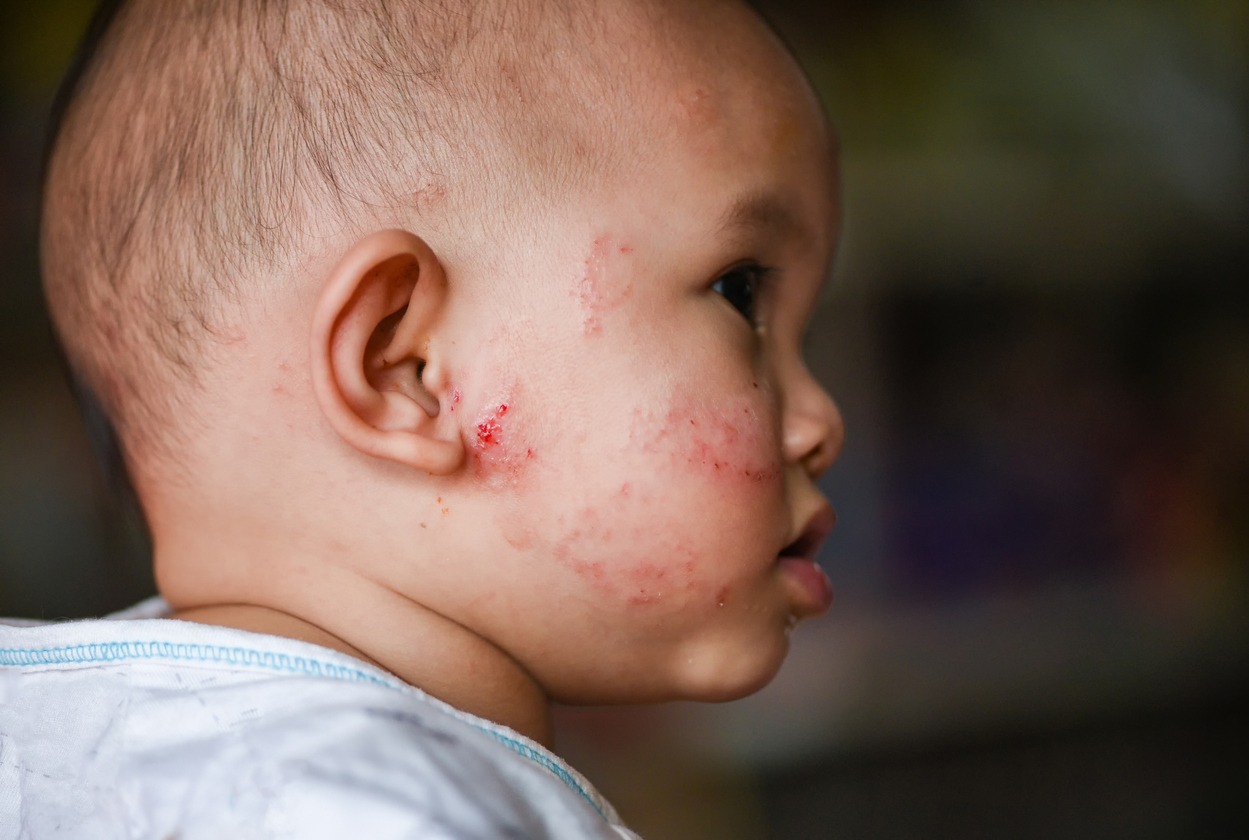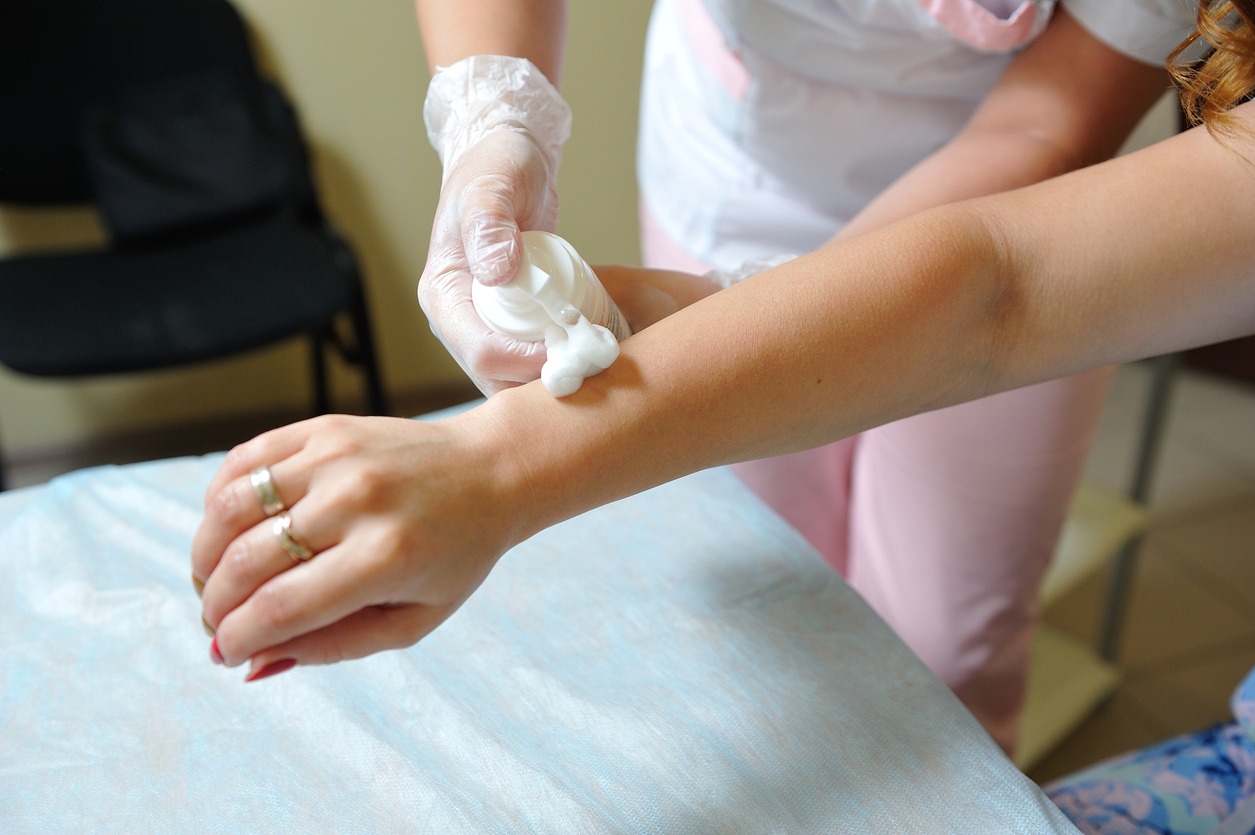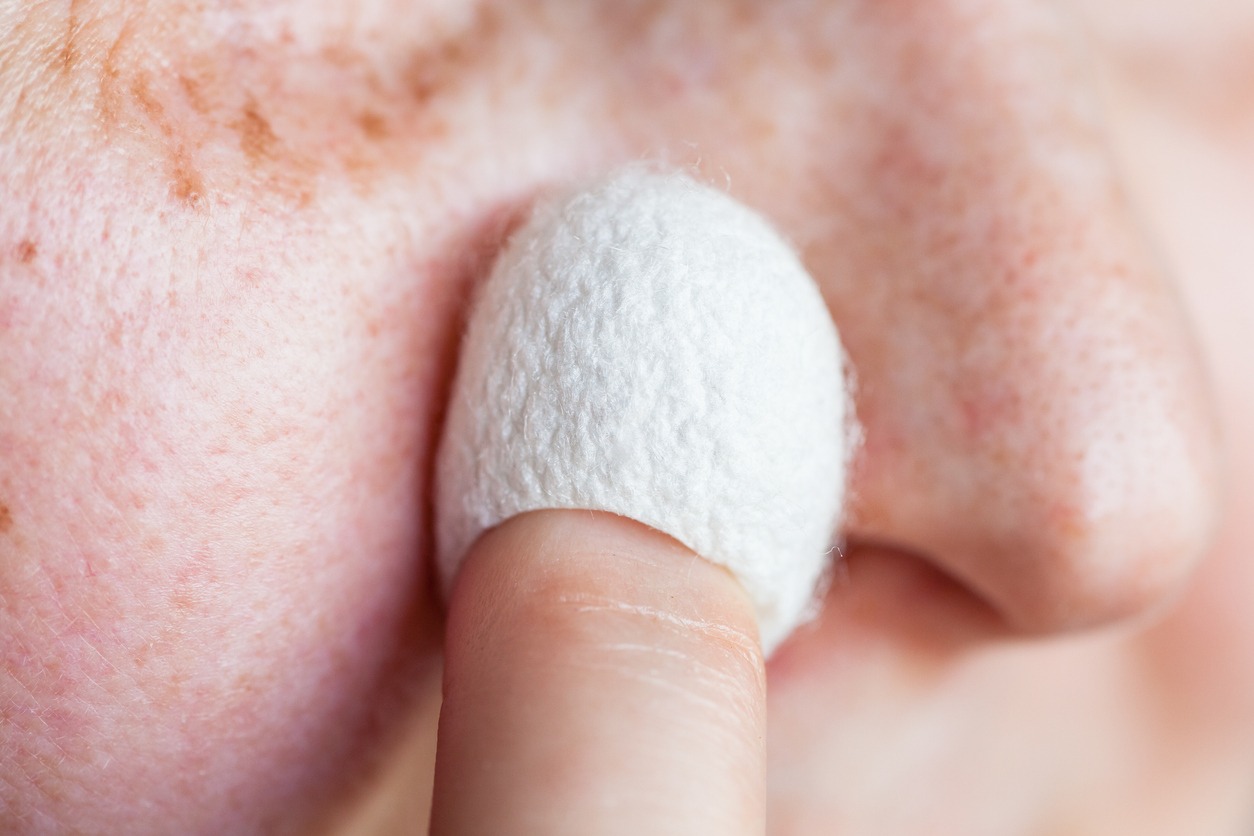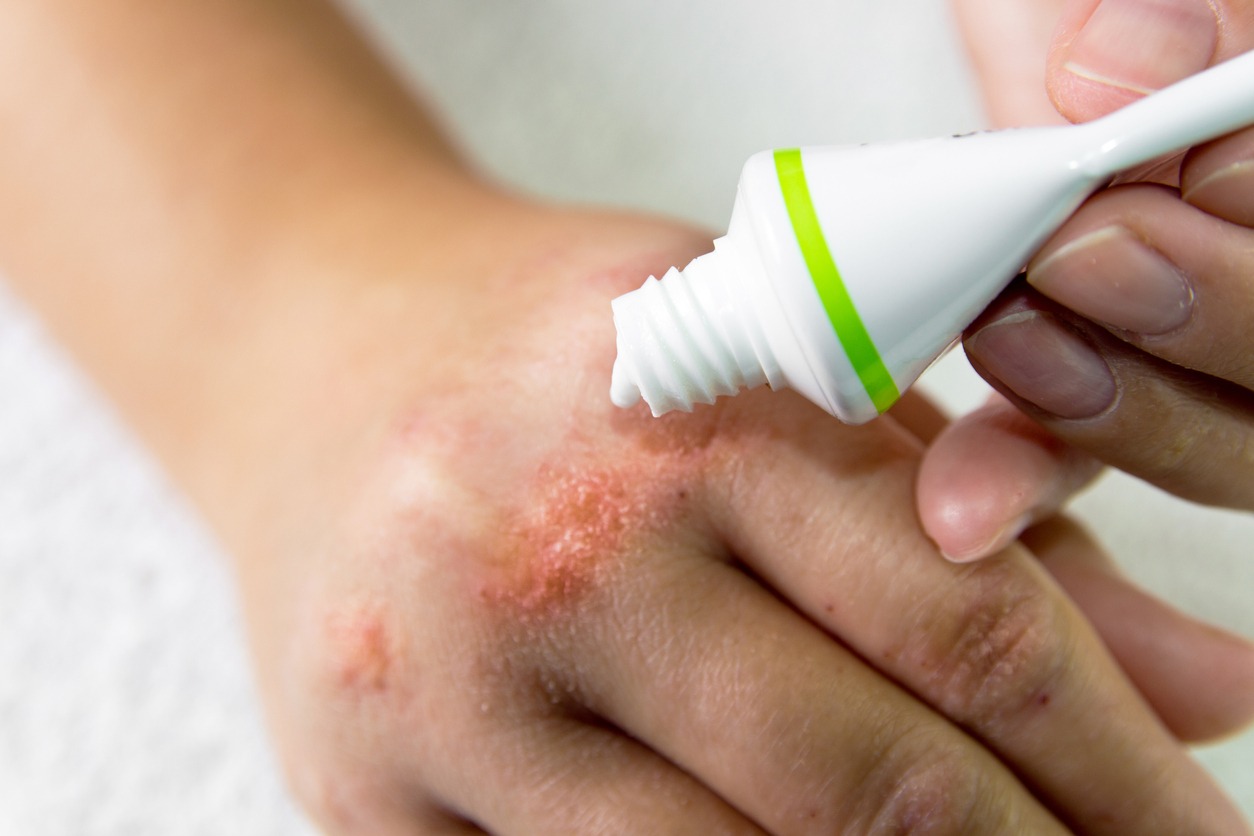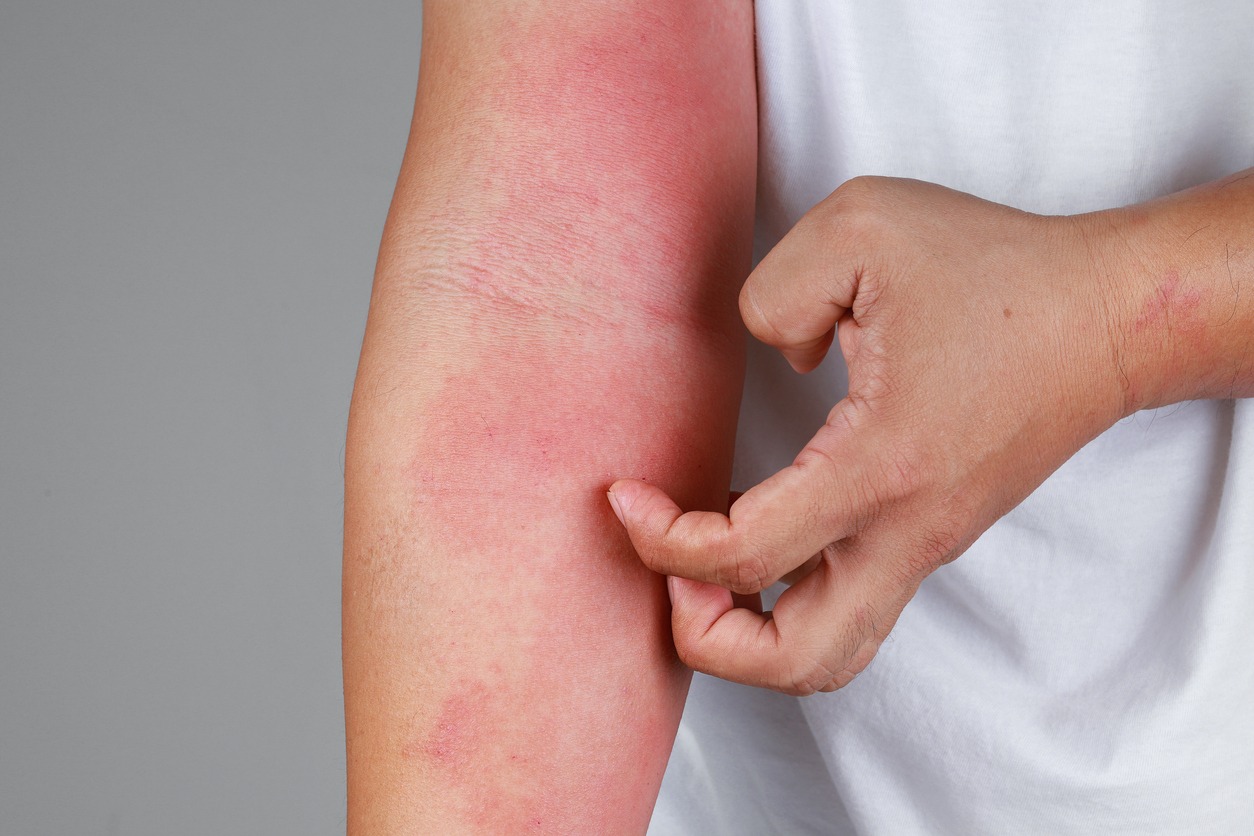One of the most common skin care issues is eczema; around 31 million Americans suffer from it, or 10% of the population. It can be challenging to find solutions to the condition’s dry, itchy skin, which can range in severity from mild to severe. Daily use of a moisturizer can help control eczema flare-ups, whether you have the condition yourself or are caring for a child who does. It’s possible to find relief from eczema’s dry, itchy skin with the correct products and formulations.
Eczema can be treated with ointments, creams, and lotions to alleviate symptoms and improve the condition’s appearance. Dermatologists often advise people with eczema to keep their skin well-hydrated. To keep eczema under control, it is crucial to maintain the skin’s natural moisture barrier. This article offers a more in-depth look into eczema lotions and the factors that may be important to consider when selecting a lotion for skin prone to eczema. It addresses some of the most frequently asked issues regarding eczema creams and guides recognizing the signs that it’s time to contact a doctor.
What is Eczema?
Eczema, often called dermatitis, is an extremely common skin disease characterized by inflammation, redness, and general irritation. Dry skin and dryness are primary eczema triggers; thus, avoiding these conditions is essential. Skincare routines that involve frequent moisturizing and general hygiene through cleaning can help prevent dry skin. The most effective remedies for eczema are a warm bath with mild antiseptic soap and an excellent moisturizer.
Managing eczema can be challenging, but the most effective lotions offer welcome relief. It’s possible to have eczema anywhere, even on your face, hands, or scalp. Due to the resulting itching, you may be tempted to scratch, resulting in further skin damage, like splits and rashes. No one cause for this skin problem exists, although treatments with increased moisturizing characteristics effectively alleviate its symptoms.
Common Causes of Eczema
While the precise cause of eczema remains unknown, researchers suspect a mix of hereditary and environmental factors. Those who have a history of allergies, asthma, or hay fever in their family are at a higher risk. Although eczema can appear at any age, it typically manifests in young children. Between 10 and 20 percent of American youngsters suffer from eczema, according to some estimates. Adults are less likely to experience symptoms, although roughly 3% of adults are affected by the disorder.
Simply put, eczema is caused by a combination of a person’s genes and surroundings. Symptoms of eczema manifest after an overreaction of the immune system to environmental factors such as pollen, sunlight, and hot water. Not having a healthy epidermis, which protects the skin from the elements, is of little help. Damage to the skin’s protective barrier increases exposure to allergens and other environmental irritants.
Similarly, eczema can be triggered or made worse by particularly harsh weather. Extreme heat or cold can irritate the skin, reducing its ability to act as a barrier and prevent moisture loss. This also applies to the temperature of the water you wash with, so avoid extremes of hot and cold.
Some studies have found a link between eczema and genetic predisposition. According to research, many inflammatory disorders, including asthma, allergies, and hay fever, have been related to atopic dermatitis, a kind of eczema. Therefore, if you suffer from eczema, you may have an increased risk of having one of these conditions and vice versa.
Best Lotion for Eczema Prone Skin
When selecting the best lotion for eczema, there are specific elements to look for, such as anti-inflammatory nutrients and hydrating botanicals. Harsh chemicals, perfumes, and additives are also things to avoid. Moisturizers are great because they help keep your skin hydrated, calm irritation, and fortify your skin’s natural defenses. Damage to the skin’s protective barrier and the accompanying moisture loss occurs when this barrier is compromised. Good eczema creams contain calming and anti-inflammatory elements. Look for lotions that don’t contain any artificial colors, flavors, or preservatives.
1. Daily Moisturizing Lotion
The lightweight mix of a daily moisturizing lotion does an excellent job of retaining moisture for a whole day. Ceramides, a type of lipid molecule, assist the skin in retaining moisture and promote cell renewal. Lotion’s moisturizing ingredients and humectants work together to keep skin soft and supple. Hyaluronic is another one of the key elements of this lotion. The lotion has no scent and is completely greaseless. It’s great for people with sensitive skin because it is hypoallergenic, doesn’t clog pores, and won’t irritate.
2. Unscented Lotion for Sensitive Skin
When treating eczema, an unscented lotion is preferable for people with sensitive skin. The absence of fragrances and the product’s ability to seal in moisture will keep your skin feeling fresh and supple all day long. The lotion’s microdroplets of jelly lock moisture into the skin to prevent dryness and itching, and it has been shown in a clinical trial to repair and hydrate dry skin in just five days. You only need three or four pumps of lotion daily to restore damaged skin and maintain hydration.
3. Soothing Lotion for Dry and Itchy Skin
People suffering from eczema and dry, itchy skin can also benefit from a soothing lotion. The lotion instantly hydrates the skin to avoid dryness. Alpha Hydroxy Acid, found in the lotion, has been linked to increased UV sensitivity. To avoid sunburn, you should use lotion in conjunction with sunscreen.
The lotion’s effects are long-lasting, and you won’t notice any aroma. It doesn’t add extra weight or grease to your skin and is very lightweight. This non-greasy, thick formula can be used on infants and adults. Rather than using synthetic perfumes, sulfates, colors, or parabens—all of which can exacerbate eczema symptoms—it employs colloidal oatmeal and prebiotic moisturizers to fortify the skin’s barrier and reduce symptoms like itching and dryness.
4. Skin Therapy Body Lotion with Cocoa Butter
This luxurious cocoa-scented deep-hydrating lotion is perfect for those who like the feeling of soft skin. It’s a great source of nourishment for every skin type, even those prone to eczema. The vitamin E in this body lotion may be useful for reducing the appearance of scars and stretch marks, and it may also help to firm the skin. This plant-based body lotion is a moisturizer that will leave your skin soft and supple.
5. Daily Moisturizer Lotion with Oatmeal
The eczema-fighting ingredients in this lotion are the colloidal oatmeal and the ceramides. This occlusive component inhibits histamine release, enhancing skin hydration and restoring the skin’s protective barrier. Redness, itching, and dryness are also reduced.
Things to Remember in Moisturizing an Eczema Prone Skin
It is well known that dry skin can aggravate and flare up eczema; thus, preventing the skin from drying out is an important part of eczema management. Many environmental and lifestyle factors contribute to dry skin, including low humidity, wind, harsh soaps or detergents, over-washing, insufficient moisturizing, and inadequate heating. Controlling eczema requires regular moisturizing and using products designed to treat skin problems like this.
- A moisturizer is best done after applying the topical prescription medication as instructed.
- Applying a thick coating of moisturizer within three minutes of getting out of the shower or bath is recommended to seal in the moisture and protect the skin barrier.
- The skin benefits most from a nightly cleansing and moisturizing before going to bed, as this is when its natural lipid barrier is most permeable to water and when the body is most relaxed and ready to sleep.
- When caring for sensitive skin, it is best to use a moisturizer that does not contain any added dyes or fragrances.
- Avoid dipping fingers or hands directly into the jar to avoid contaminating the lotion with germs. Use a bottle with a pouring spout, a pump sprayer, or a measuring spoon and cup.
- Softening and warming the moisturizer between the hands before application aids in its absorption.
- If you want to apply moisturizer properly, you should press your palm containing the product into your skin using downward strokes and avoid using up-and-down or circular motions.
- Allowing extra moisturizer to sink into the skin is preferable to rubbing it off prematurely. Moisturizers are more likely to be absorbed if you gently rub them in.
- To avoid continuous drying, moisturize your hands after washing them with soap or water.
- If eczema becomes severe across both hands, a nightly practice medicating the skin and then moisturizing it with cream is recommended. To further prevent moisture loss, cotton gloves can be worn.
Conclusion
Numerous options are available when shopping for a lotion that can be taken in tandem to lessen the severity of eczema outbreaks. Lotions are moisturizing cream that is predominantly water and contains very little oil. Many alternatives are available, including lotions developed by some companies for the express purpose of treating eczema.
According to experts, lotions can help make eczema more tolerable, even if the condition can be difficult to treat. The two primary categories of eczema treatments are those that alleviate the condition’s symptoms, such as redness, itching, and dryness, and those that restore and preserve the skin’s natural barrier function.
Finally, seasonality should be considered when selecting a product for eczema-prone skin. Lotions are OK for the warmer months, but in the winter, you’ll want to switch to something with a thicker, richer texture, like a cream, ointment, or balm. Also, if regular moisturizing isn’t doing much to help your eczema, a trip to the dermatologist might be in order.



